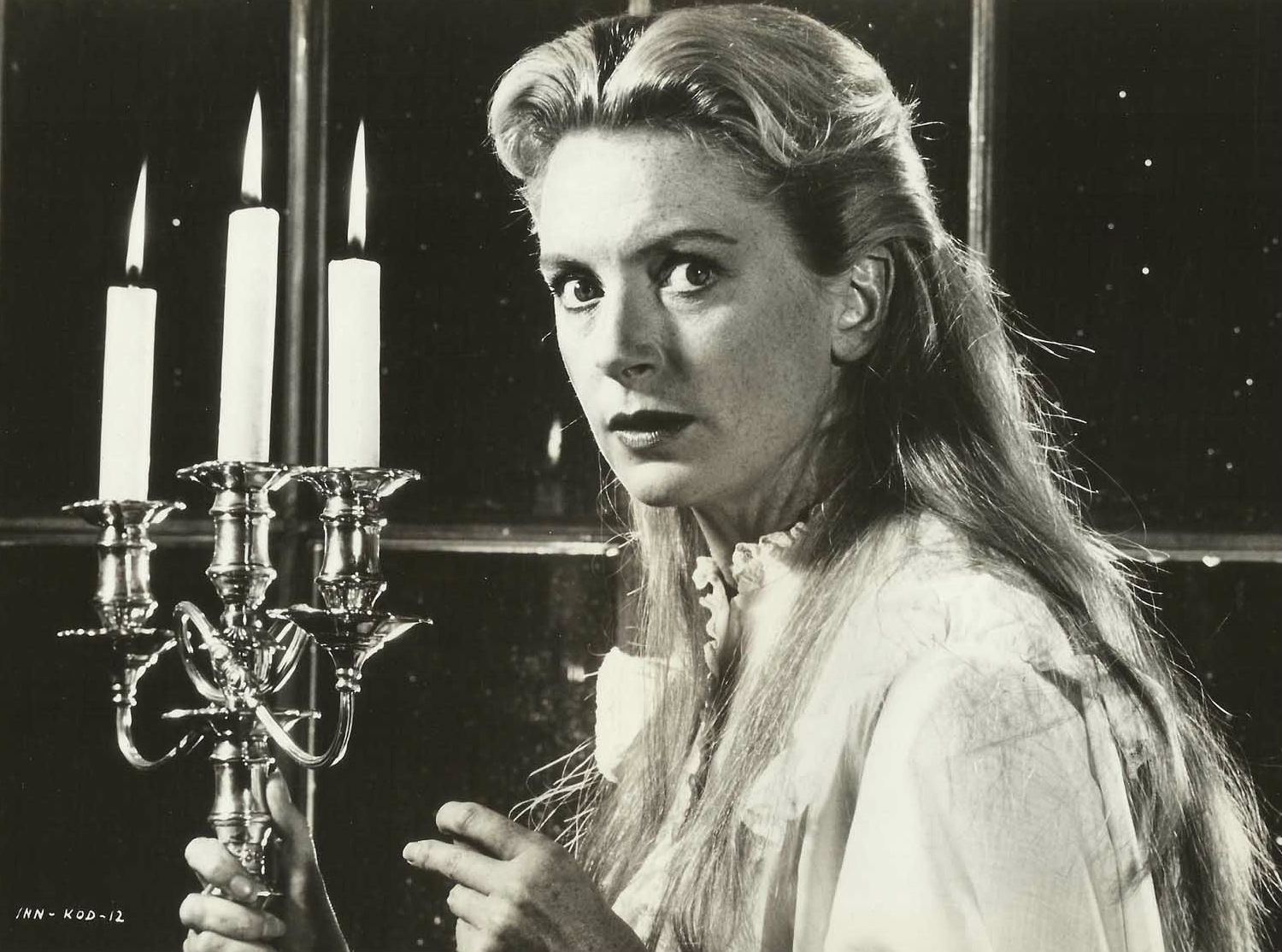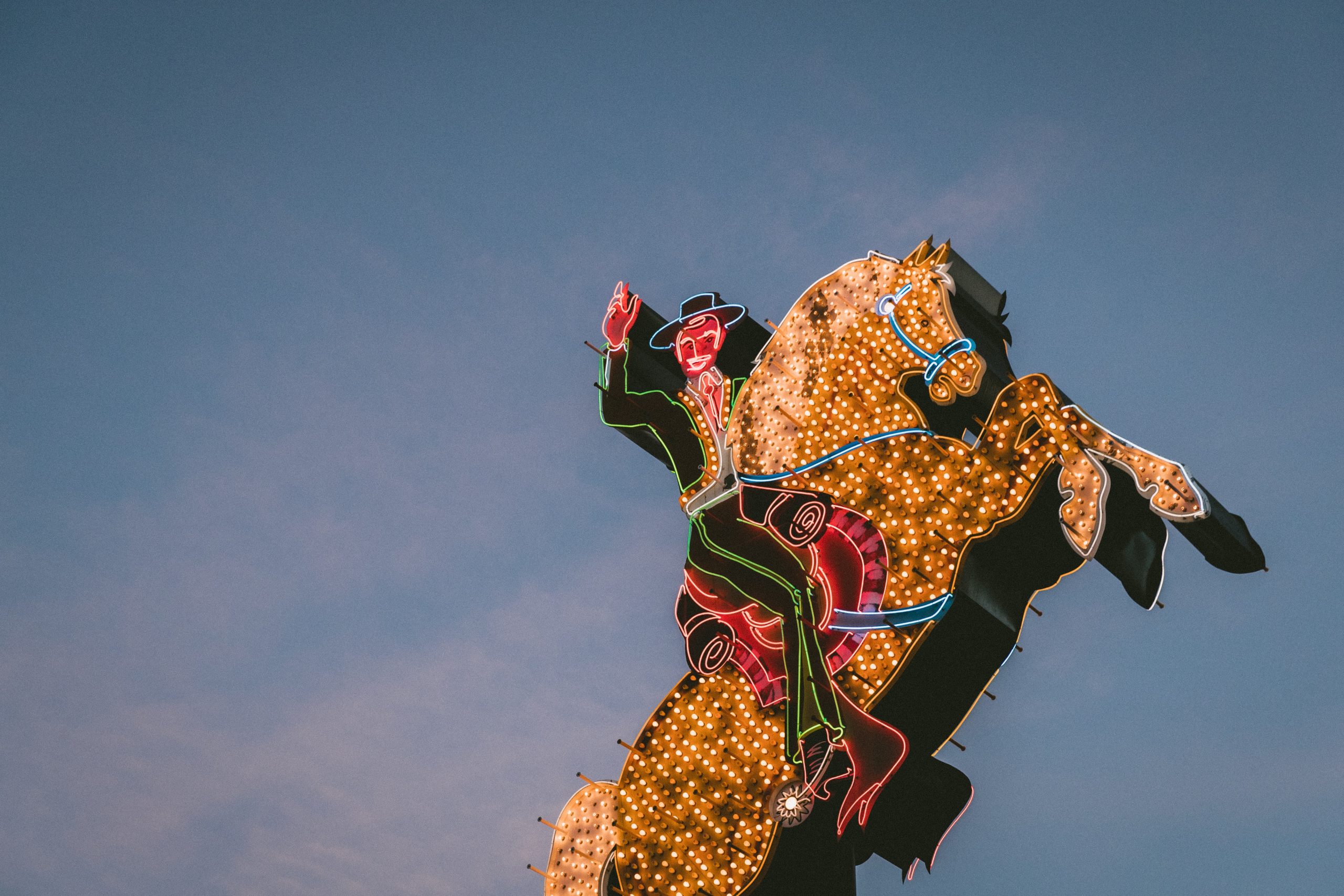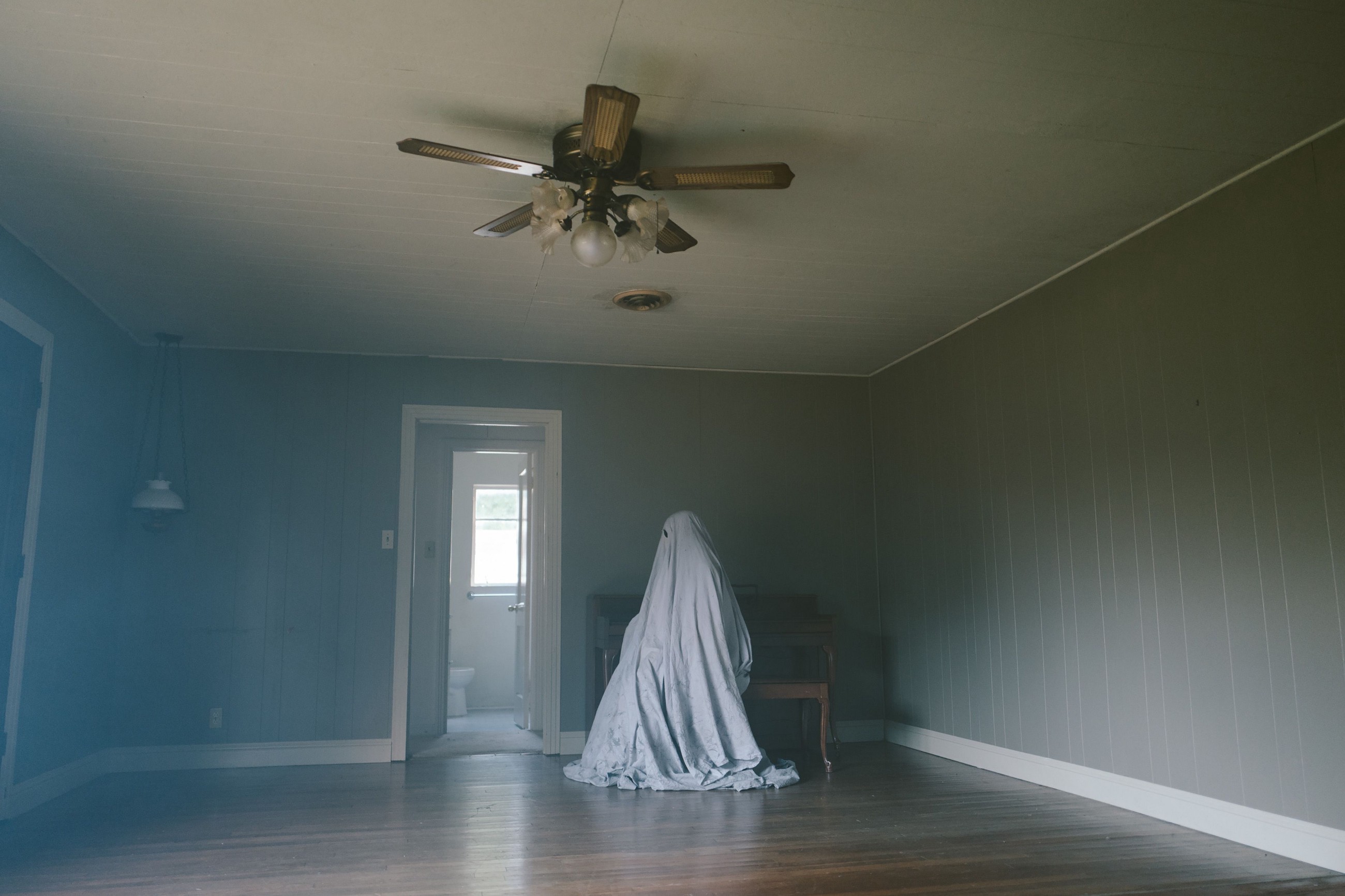Books & Culture
Why We Keep Getting New Adaptations of “The Turn of the Screw”
Henry James’s century-old novella never stops feeling relevant

There is a word that more than one movie critic has used to describe the novels of Henry James: “unfilmable.” Others prefer “unadaptable”; still others, “untheatrical.” Semantics aside, the underlying diagnosis remains the same: the very traits that make the Master’s oeuvre catnip for literary scholars—labyrinthine sentence structures, deep attention to characters’ inner lives, and subtle commentary on nineteenth-century social structures—have proved serious hindrances to directors looking to bring the likes of The Ambassadors or The Portrait of a Lady to the stage or screen.
Critics therefore often conclude, as did Lisa Zeidner writing for the New York Times, that “most [adaptations of the novels] lose James in the translation.” Filmmakers usually bungle the Modernist author’s nuance, she continues, either by succumbing to “deadly dull[ness]” or by so ludicrously inflating the drama of a given narrative that the resulting movie bears no resemblance to its delicate source text. (Tellingly, James’s own attempts to write for the theater, the most popular dramatic medium during his lifetime, failed bombastically: Guy Domville, his only play ever to reach the stage, was famously greeted with “tumultuous hooting, groaning, and hissing” on opening night.)
But against this backdrop of ho-hum James interpretations, one exception emerges, as glaringly out of place as a ghost in the daylight. James’s 1898 novella The Turn of the Screw has been brought to film, TV, and the stage at least 27 times, dwarfing the closest contender for most-adapted James book (The Aspern Papers, with approximately 17 performing arts iterations). Between the first Turn adaptation (a 1950 Broadway play directed by Harold Pinter) and the latest (the second season of the Netflix series The Haunting of Hill House, which will take place in the Turn universe and is slotted for release sometime this year), the slip of a tale has been transported to a stunning variety of historical contexts. These settings have ranged from the swinging ‘60s (dir. Rusty Lemorande, 1992) to a World War-I era psychiatric asylum (dir. Tim Fywell, 2009) to the melancholic overkill of mid-1990s Maine, replete with a grunge soundtrack and wardrobe (January’s The Turning, dir. Flora Sigismondi).
And it isn’t simply that there are a good number of Turns out in the world; there are a number of good ones, too. Jack Clayton’s 1961 film The Innocents features a screenplay by Truman Capote and routinely ranks on lists of the greatest horror movies of all time; Benjamin Britten’s opera has been deemed a masterpiece by several major critics; a 1959 television production starred Ingrid Bergman in the leading role; Alejandro Amenábar’s The Others (2001, starring Nicole Kidman), which riffs loosely on the original novella, earned wide praise for its brooding atmosphere and psychological thrills.
The very factor that makes most other James narratives so colossally difficult to adapt also makes Turn of the Screw an inviting prospect: its congenital ambiguity.
Why does Turn break the mold? It may be that the very factor that makes most other James narratives so colossally difficult to adapt also makes Turn of the Screw such an inviting prospect: its congenital ambiguity. In other works, James’s characteristic nuance manifests primarily at the levels of sentence and mental event, resulting in entire scenes given over to “people thinking about what others are thinking,” scenes that seem custom-designed to “stymie … directors,” as scholar Lee Clark Mitchell puts it. But in James’s best-known Gothic tale, this nuance largely takes the far more cinematic forms of perceptual and supernatural doubt.
Or, rather, doubts. The sources of eerie uncertainty in Turn of the Screw are legion, despite—or, in fact, because of—its deceptively simple plot: an unnamed woman of indeterminate background takes a job as a governess to two wealthy orphans at a remote country estate, all too readily accepting the condition that she never contact her employer about any problems that may arise during her stay. The governess is charmed by the lovely Bly Manor and by her two lovely young charges, Miles and Flora—until she becomes convinced that the ghosts of Bly’s disreputable previous employees, Peter Quint and Miss Jessel, are bent on physically and/or spiritually destroying the children.
It is because this skeleton of a setup leaves so very many questions hanging that directors, playwrights, and critics have so eagerly flocked to answer them. What exactly in the governess’s mysterious past and personality has compelled her to accept this strange posting? Are the ghosts real, or merely a product of the governess’s unraveling mind? (This particular line of inquiry dominated Turn criticism for a somewhat embarrassingly long time, with Edmund Wilson advancing the most famous “non-apparitionist” reading.) Which acts did Quint and Jessel commit with one another—or with the children—to earn such wicked reputations among the current employees of Bly? Have Miles and Flora been irreversibly corrupted by their malevolent caretakers, or are they truly as innocent as they first appear?
It is because this skeleton of a setup leaves so very many questions hanging that directors, playwrights, and critics have so eagerly flocked to answer them.
Any one of these questions might provide—and has indeed provided—more than ample temptation for a screenwriter to contribute her own fresh turn of the screw. For instance, even if a filmmaker takes up the seemingly straightforward stance that the governess is mad and the ghosts a product of the poor woman’s fevered imagination, this choice soon proves a garden of forking paths, each route leading to a unique interpretation of the original.
A number of adapters have suggested, for example, that the lecherous spirits are a sublimation of the governess’s repressed lust for her employer (see, e.g., the films by Jack Clayton [1961], Graeme Clifford [1989], and Rusty Lemorande [1992]). Others have invented a panoply of traumatic backstories to explain the governess’s present-day instability, a multiplicity only possible because her history is so sparsely sketched in the novella. We learn in Presence of Mind (dir. Antoni Aloy, 2000), for instance, that the governess was physically abused in her youth; The Turn of the Screw (dir. Rusty Lemorande, 1992) and In a Dark Place (dir. Donato Rotunno, 2006) posit that this childhood abuse was sexual in nature; in another Turn of the Screw (dir. Dan Curtis, 1974), the governess was orphaned early in life, like Flora and Miles; The Turning (2020) hints that the governess has inherited some form of mental illness from her institutionalized mother. Because each of these alternatives has major repercussions for the movie’s plot and symbolism, a filmmaker can use even the slightest interpretative tweak to justify her desire to create yet another Turn adaptation.
The particular nature of Turn’s gray areas also bears noting. Many of the ambiguities that James sows throughout Turn coyly hover at the edges of our culture’s two most luridly profitable taboos—sex and death—without naming the specific events entailed. Characters merely describe Quint’s and Jessel’s past actions as “horrors,” or “dreadful,” or an instance of people living “much too free[ly].” These winking half-revelations conveniently allow each new generation of creator to provide freshly provocative interpretations as cultural mores change and audiences become harder to shock.
Many of the ambiguities coyly hover at the edges of our culture’s most luridly profitable taboos—sex and death—without naming the specific events entailed.
Thus the only thing that Jack Clayton’s 1961 film The Innocents had to do to get a rise out of viewers was to obliquely suggest that a cross-class romance had budded between Quint and Jessel. By contrast, Michael Winner’s The Nightcomers (1972) was born in the wilder era of the sexual revolution (and three years after the restrictive Motion Picture Production Code was lifted), and therefore ups the ante with explicit portrayals of BDSM between Quint (played by a rakish Marlon Brando) and Miss Jessel. A 2006 production (Donato Rotunno’s In a Dark Place), surfing the rising tide of lesbian representation in TV and movies of the mid-2000s, adds a frankly baffling erotic subplot between the governess and Mrs. Grose. Perhaps most enduringly of all, incest and child molestation have retained their capacity to disgust across the ages, and several films have exploitatively sought to disturb increasingly jaded audiences by placing Miles and/or Flora in sexual situations (The Nightcomers, Dan Curtis’s Turn of the Screw, Tom McLoughlin’s The Haunting of Helen Walker, Presence of Mind, The Turning).
Film was still a tenderly young medium when James wrote Turn of the Screw, and it would be preposterous to suggest that he consciously wrote the story with an eye towards motion picture adaptation. (James did happen to see—and fall in love with—his first movie in 1898, the year of the novella’s release, but it wasn’t until later that his fiction would explicitly reference the cinema.) However, the particular strategy of Gothic suspense that the novella both theorizes and embodies still undergirds our contemporary understanding of what makes a horror film maximally engaging to its audience. Which is to say: the realist virtuoso was one of literature’s earliest advocates of the notion that horror thrives in understatement.
In this regard, the enigmas baked into the work’s plot and phenomenology are just the beginning; every element of the novella is an intentional exercise in withholding. But it is perhaps James’s own writings about Turn that most explicitly spell out his strategy for generating readerly chills. In a Preface published a decade after the original novella’s release, James bemoaned the way in which “the new type” of ghost story that had come into vogue in the late nineteenth century defanged itself by describing its specters in too much detail. Such tales “washed [their ghosts] clean of all queerness as by exposure to a flowing laboratory tap,” he complained. So, too, did narratives that explicitly described evil human acts succumb to “the comparative vulgarity, inevitably attending […] the offered example, the imputed vice, the cited act,” and in so doing run the risk that “they shouldn’t seem sufficiently bad” to the reader.
If Turn succeeds in its goal, the reader herself effectively serves as an adapter of the text.
It was to avoid these pitfalls, James continued, that he decided to paint Quint and Jessel’s crimes with such vagueness that “the spectator’s, the critic’s, the reader’s […] own experience, his own imagination […] will supply him quite sufficiently with all the particulars. Make him think the evil, make him think it for himself, and you are released from weak specifications.” In this framing, the ideal Gothic narrative makes the reader into an active participant in the narrative, his imagination the silver screen onto which he projects a fuller backstory by “think[ing] the evil […] for himself.” If Turn succeeds in its goal, then, the reader herself effectively serves as an adapter of the text—and conversely, any would-be adapter, be he a filmmaker, librettist, or playwright, must act as a reader, an interpreter making conscious choices about how to tie up James’s many loose ends. Unsurprising, then, that so many directors would eventually take the next step and immortalize in celluloid their respective answers to the novella’s myriad questions. (It is a cruel irony of adapting Turn, however, that as soon as a filmmaker offers up such an answer, even if only at the movie’s end, she chips away at the audience’s experience of the original text’s unremitting ambiguity. Adaptations of the novella wherein the screenwriter and director resist the urge to fill in Turn’s blanks, and instead fully reproduce those blanks for their audience, are rare indeed.)
In case this theoretical blueprint were not sufficient, though, the novella also provides the would-be adapter with a fictional role model as to how to retain an audience’s attention through Gothic delay. Turn of the Screw’s frame narrative opens on a cluster of friends exchanging spooky stories around a fire. A member of the group named Douglas will eventually relate the novella’s central tale of the hauntings at Bly. But Douglas, like a good horror filmmaker, coquettishly builds as much suspense as possible before he’ll give up the ghosts: he waits two whole nights to speak up at all, and even then, it is only to say that he must write into town for a manuscript that contains a tale of “dreadful—dreadfulness.” The document then takes another three days to arrive, and Douglas sits on it for another evening before finally spilling the beans.
Douglas’s listeners protest each time he postpones and equivocates, yet also grow progressively more excited due to these very same withholdings. “Oh how delicious!” a woman declares after he provides a teaser on the first night. It’s this same reaction that James, like his fellow creator of Gothic narrative, Douglas, undoubtedly hoped to evoke in his own audience. Turn of the Screw was originally published in Collier’s Weekly magazine in serial form, over the course of four months, so its author was banking on readers’ attraction to slow-release scares. (He was right: initial responses to the novella were overwhelmingly positive, with a typical reviewer gushing in October 1898 that the story “rivet[s] the reader’s attention on every sentence.”)
Even the work’s title evokes the kind of masochistic pleasure that arises from delayed revelation. The medieval practice of thumbscrew torture was typically inflicted with deliberate slowness, each “turn of the screw” very gradually bringing the vice tighter and tighter around a person’s finger. Anticipation was therefore part of the torment, the victim foreseeing greater levels of suffering long before he felt them. So, too, does each chapter of Turn disclose information with such painful slowness that the reader’s imagination runs wild with the “delicious” horrors to come.
The increasingly unusual experience of deprivation can provide a unique kind of joy.
James’s short tale permanently established suspense, withholding, and ambiguity as major virtues on the rubric by which we still evaluate horror today. Of course, some entries in the genre, such as David Cronenberg’s gore-fests or Eli Roth’s torture porn, intentionally aspire to maximalism. But for the larger portion of horror media, which aims to sustain slow-burn dread over a longer period of time, common wisdom holds that such narratives—be they books, movies, creepypasta, or TV shows—become decidedly less scary as soon as they overshare. This excess might take the form of showing their monster too soon, the insultingly obvious exposition of a character’s traumatic past, or a reliance on visually overwhelming CGI. (The predominantly negative responses that greeted The Turning a few months ago have accused the film of all three of these sins, with one reviewer objecting that “Nothing is subtle here, least of all the scary bits” and another begging director Sigismondi to “show us your ghosts, but please do so sparingly and tastefully,” rather than relying on an “unsubtle overuse of CGI spirits.”)
Precisely because our age is one that offers instant visual and digital gratification, the increasingly unusual experience of deprivation can provide a unique kind of joy. We experience a rare kind of suspense when we are temporarily blocked from seeing, hearing, or knowing something that, we predict, will thrill us. Halfway through Turn, in a metaphor that uncannily prefigures the cinema, the governess imagines herself as just such a blocking force between the impressionable children and the darkly sensual forces at Bly that seek to corrupt them: “I was a screen—I was to stand before [Miles and Flora]. The more I saw the less they would.” Horror fans still hope that a film or novel’s creator will stand between us and the main terrors for as long as possible—not so that we will be protected from the horrors, oh no, but so that we might stew just a while longer in the “‘delicious’” sauces of our own imagination. It’s these frissons of the invisible and the unsaid that will always be greater than the ones that actually take shape on the screen.









